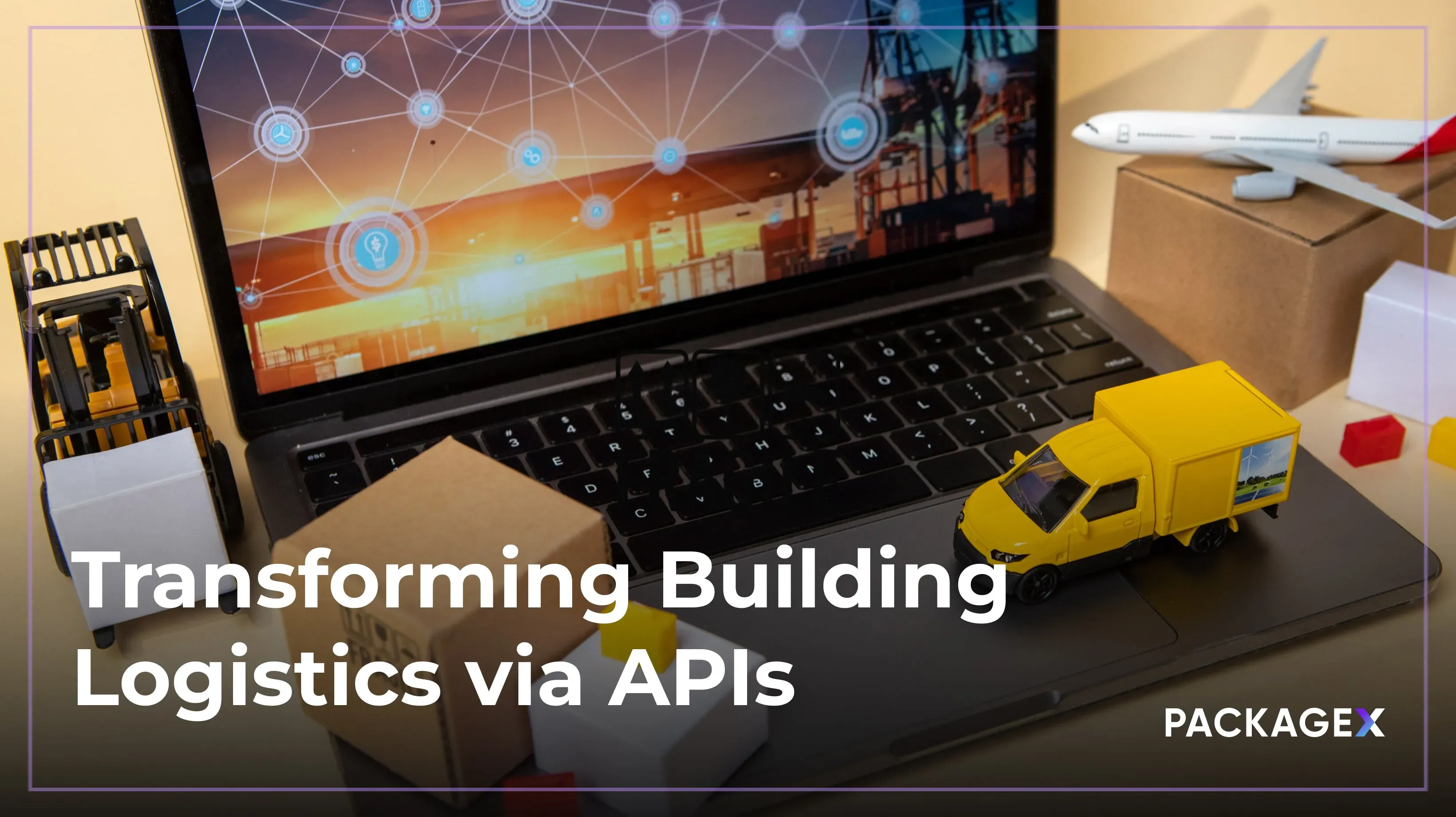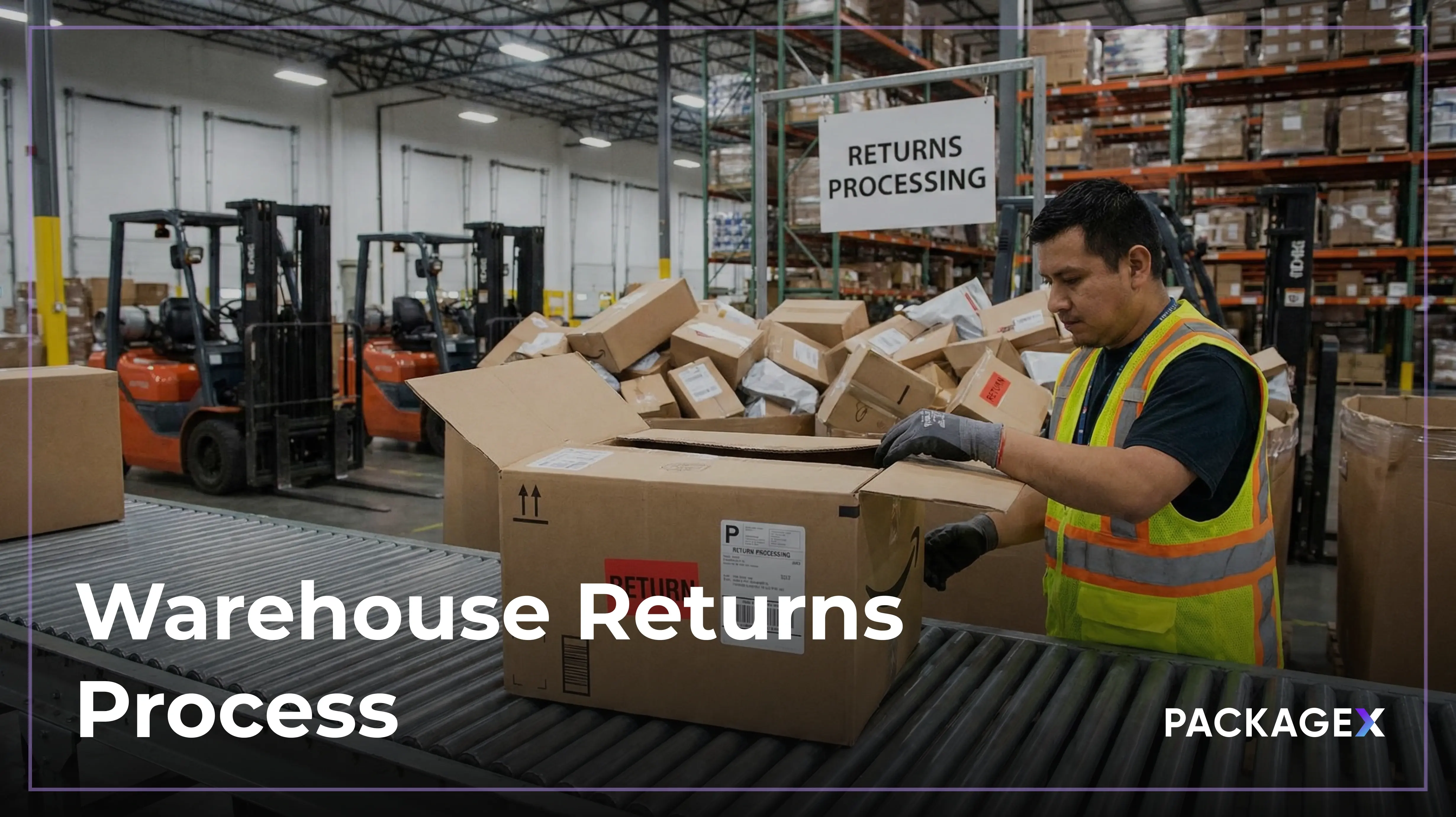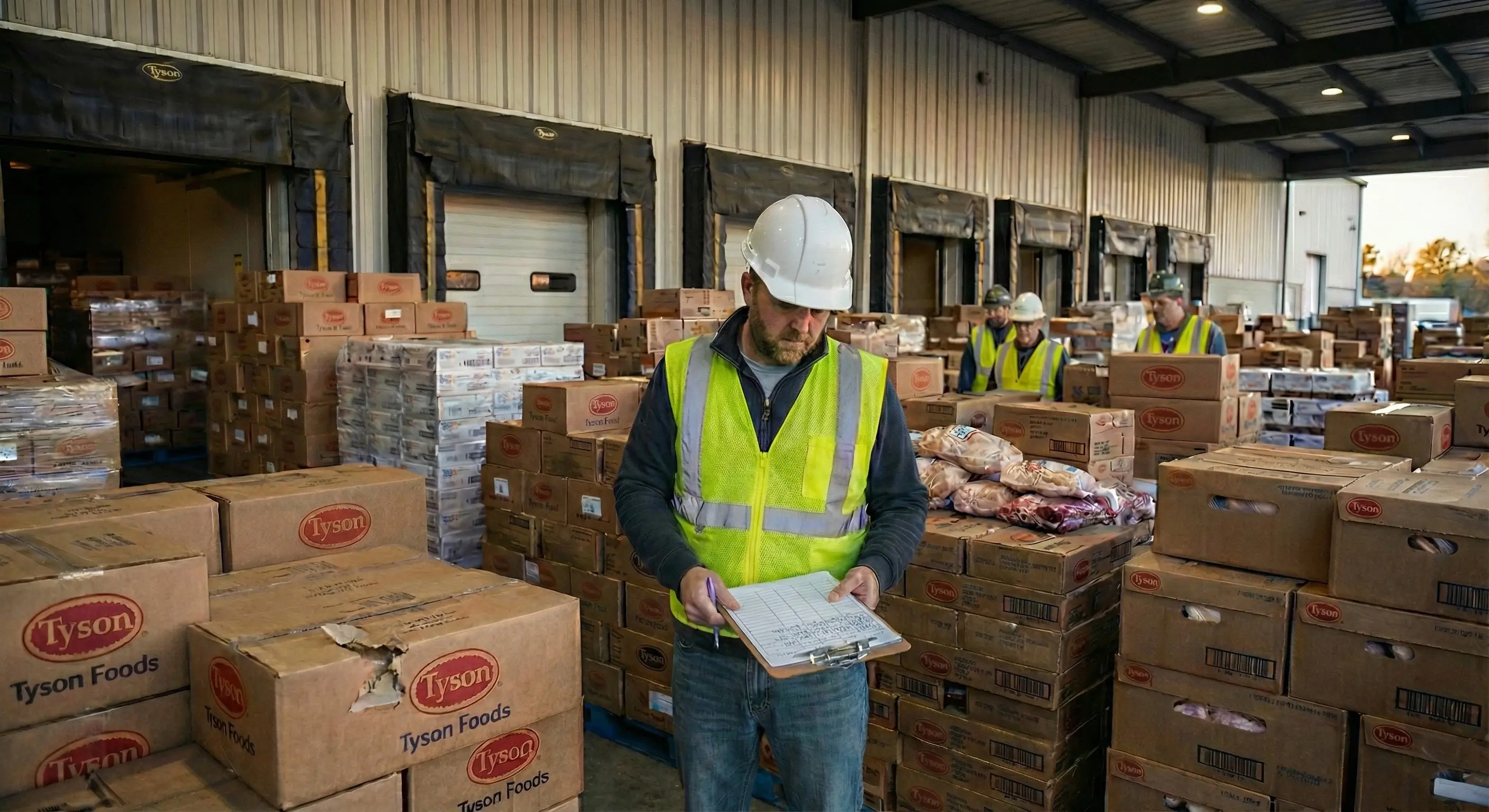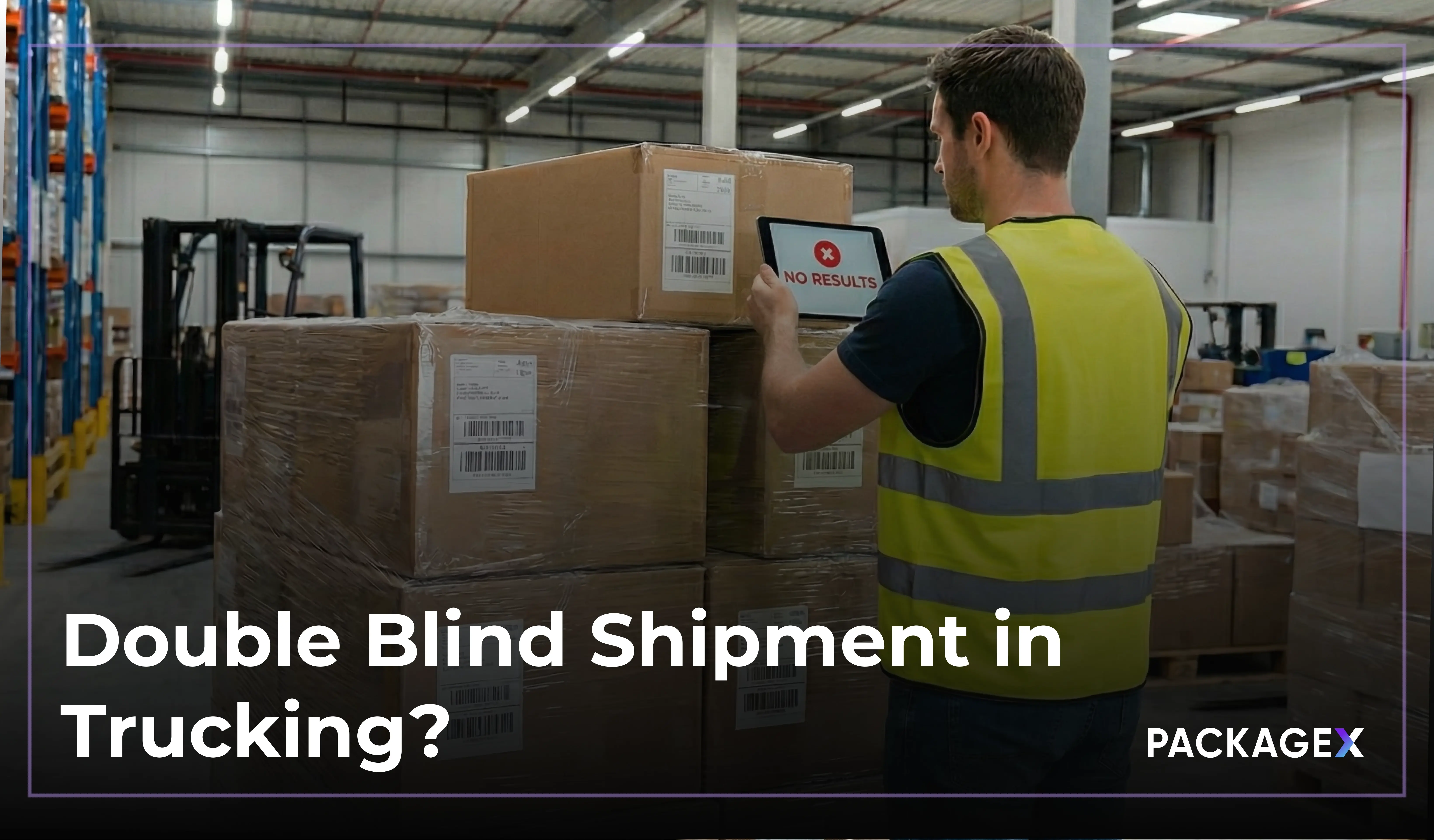The API management market is projected to grow from USD 8.86 billion in 2025 to USD 19.28 billion by 2030, reflecting a strong CAGR of 16.83%. Which highlights the rising importance of seamless integration across logistics systems.
APIs (Application Programming Interfaces) enable systems across warehousing, shipping, inventory, and delivery to synchronize in real-time.
Businesses investing in modern logistics solutions powered by seamless API integrations are seeing faster order fulfillment and more accurate tracking. From route optimization to inventory visibility, logistics is becoming smarter and more responsive day by day.
That’s why the logistics API has become a focus for modern operators.
With smart logistics solutions, teams can get flexible, ready-to-deploy tools that work with legacy systems while streamlining daily tasks. The impact is measurable, with fewer missed handoffs, faster package resolution, and improved communication across departments.
In this blog, we’ll examine the problems that older systems create and how API integration addresses them.
What is an API?
API stands for Application Programming Interface. It’s a set of rules that lets two software programs talk to each other.
Think of it like a digital handshake. One system asks for something, data, a command, a response, and the other system answers instantly.
APIs work in the background. Every time a shipment gets tracked, a payment gets confirmed, or a delivery gets updated in real time, an API is behind it.
What is API Integration?
API integration connects one software system to another. It allows data to move without needing manual steps. Information flows between tools in real time.
This is the base of modern logistics solutions. Without it, growth is impossible.
API logistics supports speed and scale. It connects services like last-mile delivery, carrier tracking, and warehouse apps. It helps teams respond faster, automate more, and move goods with fewer interventions.
It’s here to make systems smarter so teams can focus on the work that needs human judgment.
Limitations of Traditional Supply Chain Systems
Many supply chains still run on systems built before real-time technology existed. These tools were made for a slower pace. They are hard to update and even harder to connect.
Information moves in batches. By the time one team has the data, it’s already old. Orders are delayed. Inventory counts are wrong. As a result, customers lose trust.
Without strong logistics API integration, departments work in silos. They rarely connect to each other.
The result is slow response times and missed opportunities. A study found that supply chain operation errors cost American companies over one trillion dollars every year.
This is not a minor technology issue. It’s a risk to business growth. The longer companies stay on outdated systems, the more they fall behind.
That’s why more teams are moving toward API powered logistics infrastructure. When systems are connected, decisions are faster. Errors go down. Delivery speed up.
The old tools served their time. But they can’t keep up with the way supply chains work today.
How Logistics APIs Reshape Supply Chain Operations?
Supply chains have moved far beyond printed forms and siloed spreadsheets. Today, data must move fast. A logistics API allows systems to collaborate effortlessly.
Many companies utilize multiple software tools. For shipping, tracking, inventory management, and a separate tool for analytics. Without API integration, these tools stay disconnected. That leads to delays, missed insights, and errors that cost time and money.
Here’s how logistics APIs add value:
Real-Time Data Sync
With API integration, supply chain management updates instantly. That means:
- Inventory systems sync with shipping tools.
- Delivery updates show across channels in real time.
- Fulfillment errors get flagged before they spread.
No need to wait for batch uploads or daily reports.
Fewer Errors
APIs remove blind spots. When a system updates, others react right away. This helps teams:
- Respond to delays as they happen.
- Adjust shipments before problems grow.
- Give customers accurate delivery windows.
A logistics API keeps everyone on the same page, even across multiple locations.
Practical Example
For example, a food distributor using logistics APIs can reroute a delivery in seconds if a cold truck breaks down. A healthcare supplier can flag shortages instantly before a hospital runs out of critical gear.
Integrating APIs with Older Logistics Systems
Linking a modern logistics API to older software is not very simple. Many supply chains still rely on legacy systems built decades ago. These systems were not designed to handle real-time data, which makes API integration more difficult.
Common Challenges
- Outdated Data Formats
Legacy platforms often rely on fixed data structures that don't align with the flexible formats used by today's API logistics tools. - Performance Bottlenecks
Heavy API traffic can overwhelm older systems, slowing down operations and creating sync errors. - Security Weak Points
Older systems often lack current protections, leaving openings for unauthorized access during logistics API integration. - Incomplete Documentation
Many legacy platforms are poorly documented, making it harder to understand how to safely integrate APIs. - Custom Middleware Needs
Integrating requires custom-built middleware or connectors to bridge both systems.
Practical Solutions
- Data Transformation Tools
Utilize ETL tools or preprocessors to transform legacy data into API-ready formats. - Load Management
Add caching or message queues to reduce pressure on older systems. - Security Layers
Use token authentication, encryption, and access logging to protect both ends of the API integration. - Documentation Mapping
Track system behavior during integration to rebuild missing technical references. - Middleware Integration
Apply a middleware layer to handle communication, format changes, and error handling.
When done right, logistics API integration extends the life of older systems while unlocking the speed and visibility of modern tools.
API-First Architecture vs. Patchwork Integrations
Modern supply chains run faster than old systems can handle. Many companies still rely on electronic data interchange (EDI) or patchwork plug-ins that create more work than they solve. These models slow down tracking, limit visibility, and make it hard to scale.
An API-first setup avoids that. Instead of patching tools together, logistics teams work from one connected system. Each scan, update, and delivery talks to the next. This clears out delays, reduces manual work, and helps speed up processing by more than 50% in many operations.
Companies using full-stack logistics APIs report clearer operations and faster response times. Facilities know where goods are. Teams don’t waste time syncing systems. This is how API-powered logistics works best through a structure built to support real-time communication across all touchpoints.
Real-World Example: Subaru
Subaru of America runs its corporate headquarters in Camden, New Jersey. With hundreds of daily deliveries, the team relied on manual spreadsheets to track packages. It took up to 40 minutes a day just to log incoming items. Missed updates and tracking gaps were common. There was no reliable way to know where a package was once it entered the building.
Challenge:
The manual process slowed everything down. Deliveries piled up. Staff had to search through logs to find items. The lack of visibility affected both operations and employee satisfaction.
How PackageX Helped?
Subaru deployed PackageX Building Logistics, a platform powered by AI scanning and API logistics tools. Staff now scan package labels using mobile devices. Each scan links the package to a recipient. Updates are shared instantly. No manual entry is needed.
Results:
- 60× faster package processing.
- Zero manual work with mobile-first workflows.
- 100% delivery tracking through digital notifications.
- Full visibility into all inbound items.
- Digital chain of custody for every delivery.
This is a clear case of API-powered logistics in action. Subaru now runs a seamless, connected mailroom using smart facility logistics technology.
Why Choose PackageX for API-First Logistics?
PackageX provides supply chain teams with the tools to resolve delivery delays and tracking issues before they impact operations. With real-time data, AI-scanning, logistics API integration, and fast setup, it brings smarter logistics without extra layers or cost.
Here’s how PackageX can help:
- Real-time logistics updates using smart logistics API connections.
- Fewer errors with automated delivery tracking.
- Works across systems, devices, and buildings without custom builds.
- API integration for logistics that’s ready to use out of the box.
PackageX offers a modern logistics solution built for supply chain speed and flexibility. From last-yard delivery to mailroom scanning, its logistics API solutions help operations run more smoothly, without requiring new infrastructure.
FAQs
What is API in logistics?
An API in logistics is a digital interface that connects different supply chain systems, like warehousing, delivery, and inventory platforms. It enables real-time communication and data sharing across operations. Logistics API solutions help automate workflows, improve tracking, and boost overall efficiency.
How does a logistics API work?
A logistics API is a tool that enables software systems to communicate in real time. It helps automate data exchange, reducing manual work. Logistics API integration ensures faster deliveries, accurate tracking, and better supply chain coordination.
Why is API integration important for modern logistics solutions?
API integration enables logistics systems to collaborate seamlessly without delays or data silos. It’s critical for modern logistics solutions that rely on real-time updates and smart automation. With logistics API tools, businesses can scale operations and reduce fulfillment errors.
Can logistics APIs connect with older supply chain systems?
Yes, logistics APIs can be integrated with legacy systems using middleware and data transformation tools. Even older platforms can benefit from API integration to enable real-time visibility and automation. This extends the life of existing tools while improving logistics performance.




